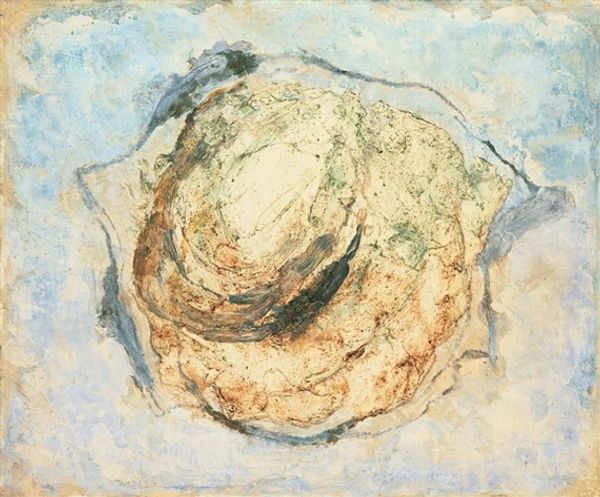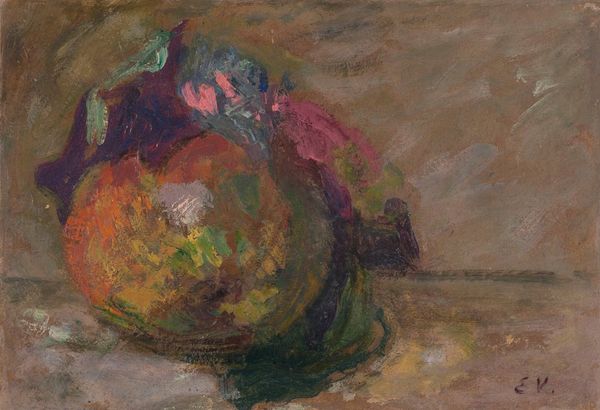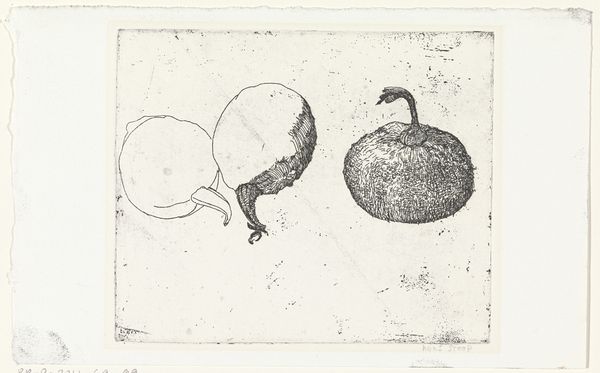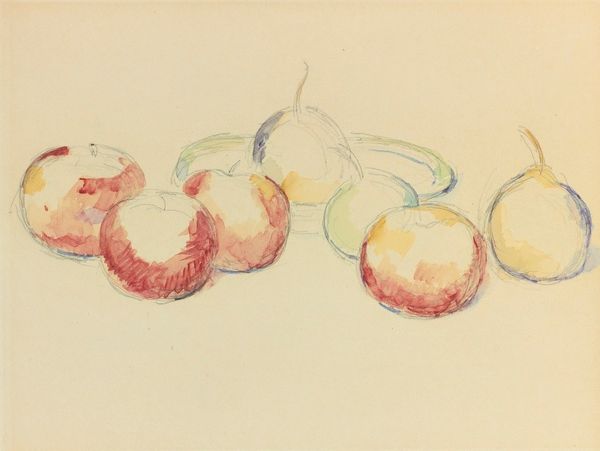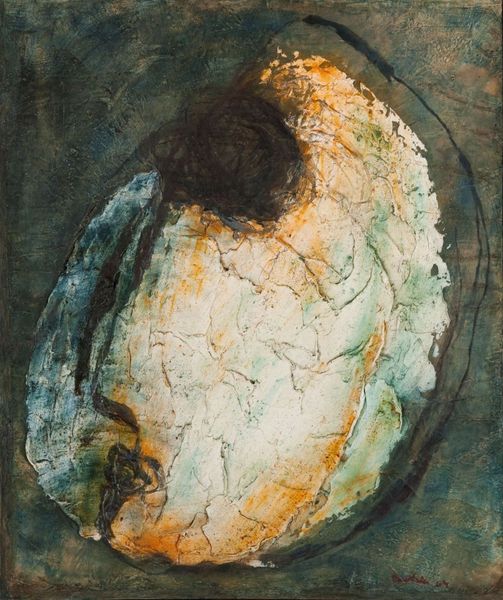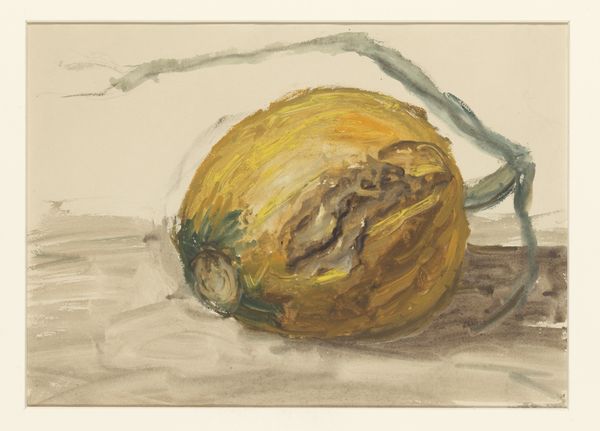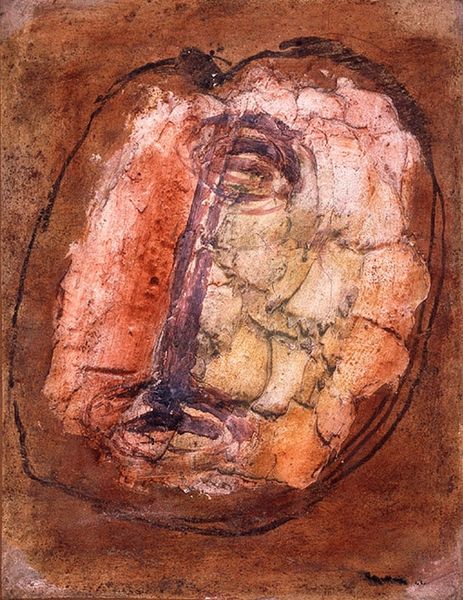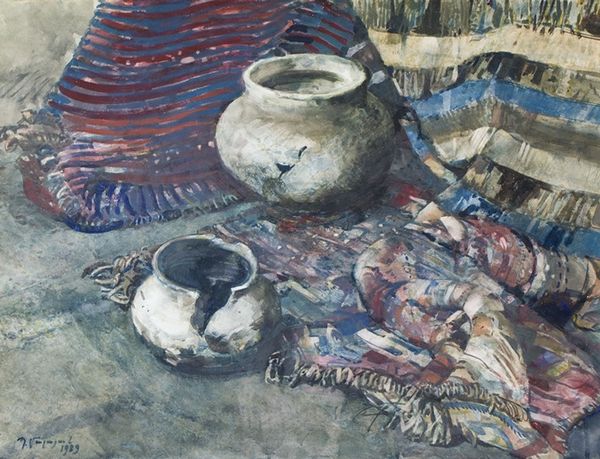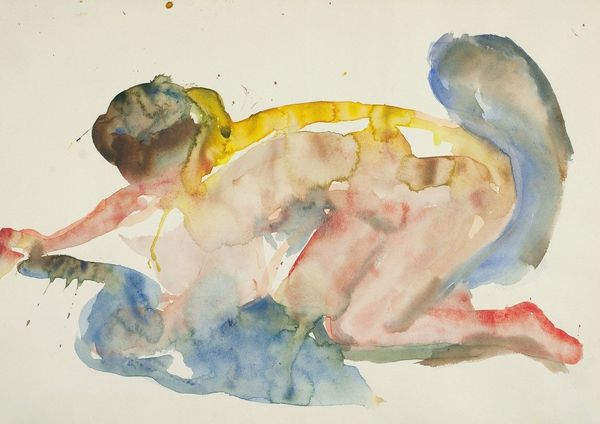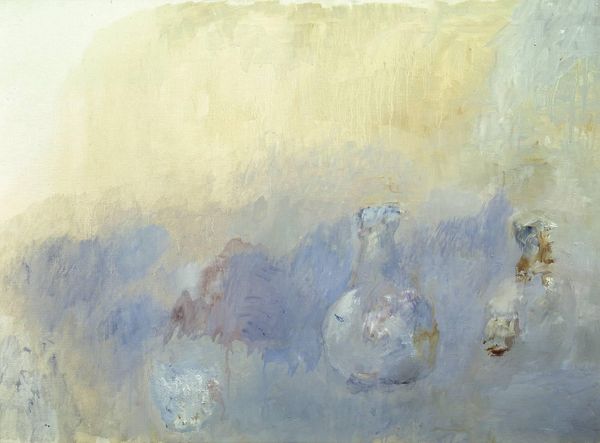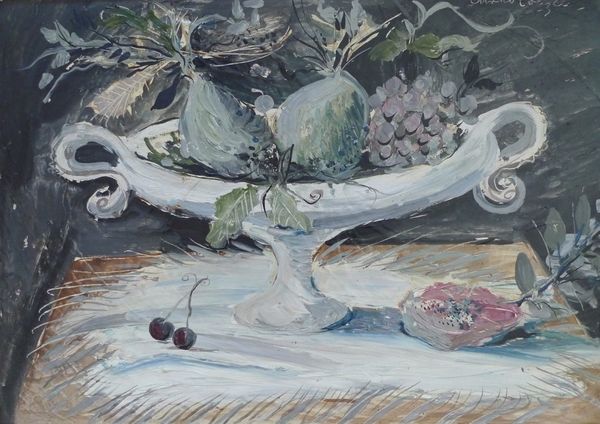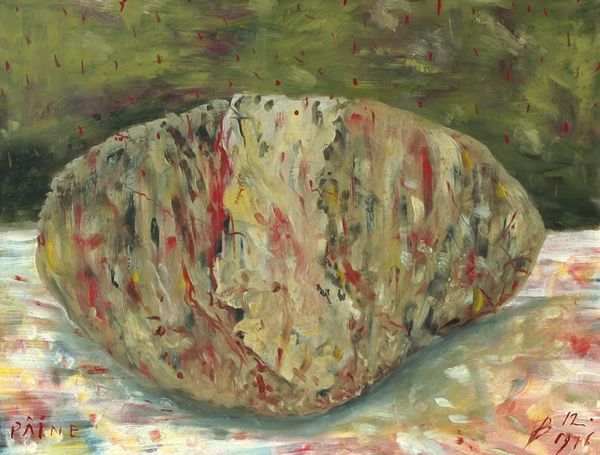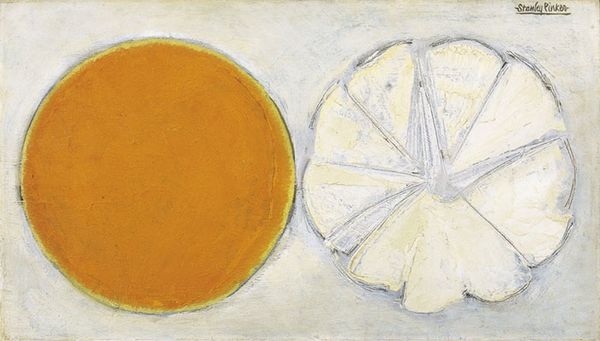
matter-painting, oil-paint
#
abstract-expressionism
#
abstract expressionism
#
matter-painting
#
oil-paint
#
oil painting
#
art-informel
#
abstraction
Copyright: Jean Fautrier,Fair Use
Editor: So, this is Jean Fautrier’s *Dépouille*, painted in 1945. It's an oil and "matter painting" piece here at the MOCA. Initially, it strikes me as almost brutally tactile – you can practically feel the weight and roughness of the materials he's using. What do you see in this piece, beyond just the textures? Curator: Ah, *Dépouille*…what a perfect title. Like shedding a skin, or maybe…being stripped bare. Painted just after the Second World War, in 1945, don't forget. Fautrier experienced its horrors first hand, a member of the French resistance. Does that shift how you see it, perhaps? The palette feels almost ghostly against the pale blue...It's a world after devastation, almost, don't you think? Editor: It definitely adds another layer – that tactile quality suddenly feels less about the art itself, and more about bearing witness, like evidence of…trauma? Curator: Precisely! Look at the impasto, that incredibly built-up texture. It isn't just texture for texture’s sake. The roughness, the cracks...These are wounds. The title, which translates roughly to 'spoils', 'remains', or 'despoilment', is so apt here! Can you feel the echoes of conflict resonating there in the surface itself? Editor: I see that so clearly now. The colours, that chalky white and blue, feel…denuded, drained. It is not some joyful exuberance of creation. This piece doesn't flinch away from pain, it sort of wrestles with it, directly and honestly. It’s an important historical reminder, a difficult mirror to look into. Curator: Yes. But also... don't be afraid to feel something yourself. Let the artwork speak. In that pale blue haze, those heavy white slabs, do you see possibility...for new life after destruction? Maybe even hope. It’s hidden, but might it be there? Editor: Hmm... It's like staring into a bleak landscape, searching for any sign of green. I guess, by engaging with these raw materials that confront such suffering, maybe he invites you to confront that pain too. Then... growth. That’s quite hopeful. Curator: And that makes this so compelling, don’t you think? Art can hold complexity, be truthful, painful and beautiful. I like to imagine a field of flowers and poppies. A promise… I like it a lot.
Comments
No comments
Be the first to comment and join the conversation on the ultimate creative platform.
